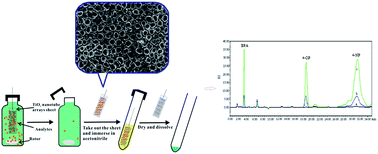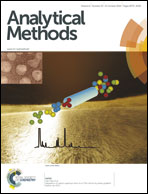TiO2 nanotube array micro-solid phase equilibrium extraction for the determination of bisphenol A, 4-n-nonylphenol, and 4-tert-octylphenol at trace levels with high-performance liquid chromatography
Abstract
This paper reports on research to establish a micro-solid phase equilibrium extraction using a highly ordered titanium dioxide (TiO2) nanotube array for the pre-concentration and determination of environmental endocrine disruptors. The analysis was performed using high-performance liquid chromatography (HPLC) with fluorescence and ultraviolet detection. The experimental results showed that method detection limits (MDL) with fluorescence detection were 0.012, 0.033, 0.036 μg L−1 and MDL with ultraviolet detection were 0.022, 0.049, 0.093 μg L−1 for bisphenol A, 4-tert-octylphenol and 4-n-nonylphenol, respectively. The proposed method was successfully applied to the analysis of the target compounds in several environmental water samples. Good spiked recoveries in the range of 75.4–103.4% and 74.8–106.2% were obtained by using HPLC with fluorescence and ultraviolet detectors, respectively. These results showed that TiO2 nanotube arrays would be useful in the enrichment and determination of trace pollutants.


 Please wait while we load your content...
Please wait while we load your content...